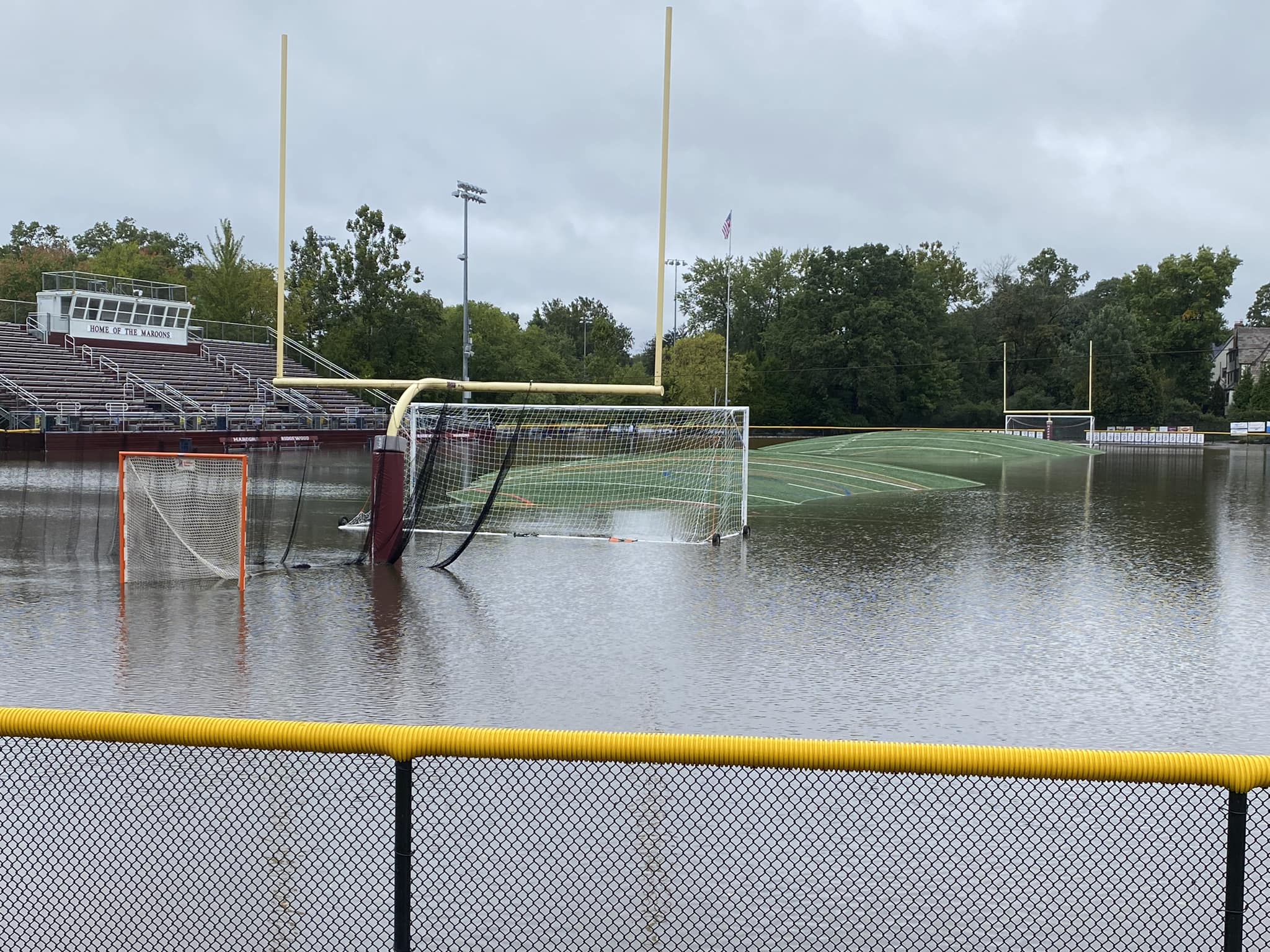
photos old and new by Boyd Loving
the staff of the Ridgewood blog
Ridgewood NJ, because there is so much confusion ,when something, such as a building or infrastructure, is constructed in a flood zone, it means that it has been built in an area that is susceptible to flooding during certain weather events or natural disasters, particularly heavy rainfall, storm surges, or the overflow of nearby bodies of water like rivers or lakes, brooks, and streams. Flood zones are typically designated based on historical flood patterns, topography, and hydrological data. Most of the area bordering the Ho-Ho-Kus brook and Saddle River are considered flood zones. Here are some key implications and considerations when something is built in a flood zone:

- Increased Flood Risk: Building in a flood zone increases the risk of flooding for that structure. Floodwaters can cause significant damage to buildings, possessions, and infrastructure, leading to costly repairs or replacement.
- Regulations and Building Codes: Many jurisdictions have specific building regulations and codes that apply to construction in flood zones. These regulations often require buildings to be constructed to withstand floodwaters or be elevated above the base flood elevation to minimize damage.
- Insurance: Properties in flood zones may be required to have flood insurance, and premiums can be higher due to the increased risk. Without flood insurance, property owners may be financially vulnerable in the event of flooding.
- Mitigation Measures: Building in a flood zone may necessitate the implementation of flood mitigation measures, such as the use of flood-resistant building materials, elevated foundations, or flood barriers to protect against damage.
- Environmental Impact: Constructing in flood-prone areas can have environmental consequences, as it may disrupt local ecosystems and contribute to water pollution if not managed properly.
- Emergency Preparedness: Residents and property owners in flood zones need to be prepared for potential flooding events. This includes having evacuation plans, emergency supplies, and staying informed about weather conditions.
- Infrastructure Considerations: Infrastructure like roads, bridges, and utilities in flood zones may require additional engineering and maintenance to withstand flooding and remain functional during and after a flood event.
- Zoning and Land Use Planning: Zoning regulations and land use planning play a crucial role in determining where and how development can occur in flood-prone areas. These policies aim to balance economic and community needs with safety and environmental considerations.
- Resilience and Adaptation: In the face of climate change and the increased frequency and severity of extreme weather events, communities are increasingly focusing on resilience and adaptation strategies to address flood risk, which may include managed retreat from flood-prone areas or the development of resilient infrastructure.
It’s important for property owners, developers, and local authorities to carefully assess the risks and benefits of building in flood zones, taking into account safety, environmental impact, and long-term sustainability. Mitigation measures and adherence to building codes are essential to reduce the vulnerabilities associated with development in these areas.
Tell your story #TheRidgewoodblog , #



But we knew this already…how come they didn’t ?
some people think “kick backs”
It’s the stupid “RHS building backdrop” for game nights and graduation event.
Some residents want everything to be done with that view for some reason!
Smart thing would be to switch the location of parking lot and tennis courts with a field. But smart things don’t happen in Ridgewood!
If you look at Google Maps you can see that the stadium is much larger than the tennis courts/parking lot area. It would never fit.
Wouldn’t be able to put a parking lot where the field is now, so you’d lose all the spots as well
BF field is big enough. It should have been there all along.
Why was it not done at the BF field?
What’s the historical reason?
They have every resident a Ridgewood hook line and sinker, it’s called the maroon Kool-Aid! It will keep flooding, and they will keep rebuilding, and you all will keep paying for it, whether you like it or not!
They will never learn regarding this fake Astroturf shit. And rip up the Astroturf, raise all of the fields, a few feet and then plant grass.
Nice and dry in my basement.
If the entire county had remained celery farms, we would be much better off.